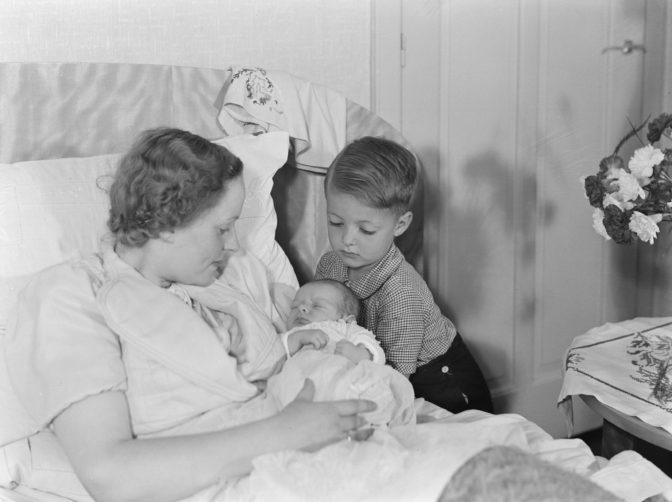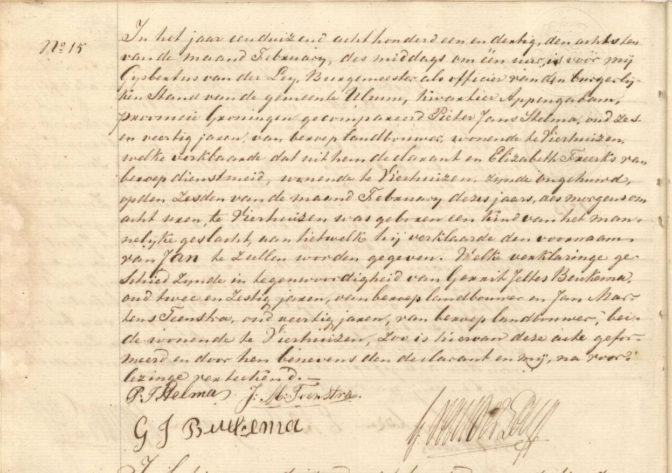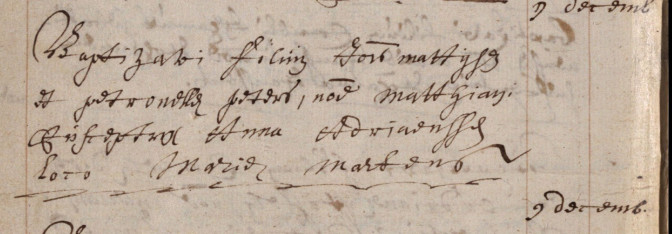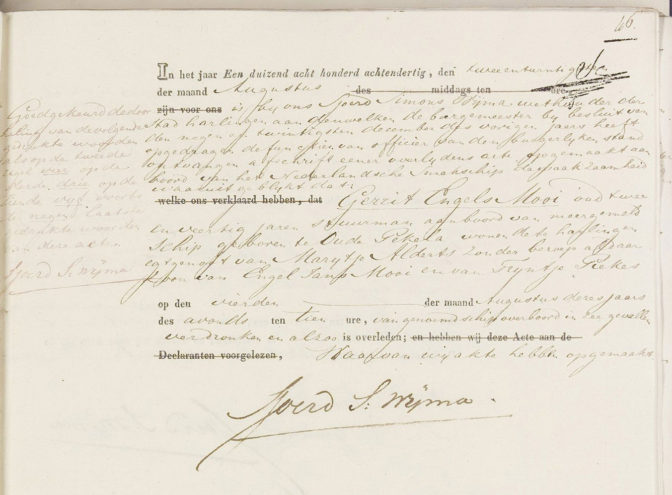How do you find out when your ancestor from the Netherlands was born? Here are five different ways.

Credits: Willem van de Poll, collection Nationaal Archief (CC-BY)
1: Find the birth record
If your ancestor was born more than 100 years ago, but after 1811 (or 1795 for some southern parts of the Netherlands), the civil registration birth record will give you the exact date and place of birth. Many birth records are indexed on WieWasWie, sometimes including scans, and scans of most public birth records are available at FamilySearch.
If you are looking for somebody who was born less than 100 years ago, you have to order the birth record from the municipality. This can only be done with proof of death or consent of the person. See “How to order my own birth certificate from the Netherlands” for more information.

Birth record of Jan Freerks, 6 February 1831
2: Find the baptismal record
If your ancestor was born before 1811/1795, you can look for the baptismal records held by the churches. These can often be found on the websites of the archives that hold the records, or at FamilySearch. See the Digital Resources Netherlands and Belgium website for links specific to your area.
Baptismal records from the late 1700s often include the birth date. Before that, they only record the baptismal date. Since parents usually had their children baptized within days or weeks of being born, this gives you a good estimate for their birth date. Exact birth dates may not be recorded for people born before say 1750. Be careful though, some religions such as Anabaptists only baptized adults.

Baptismal record Mathijs Jan Mathijsen
3: Check the population register or census records
Population registers (since 1850) and census records (since 1795) often include the birth date. This information is usually copied from other sources and not always provided by a person who had personal knowledge of the correct date, so this date needs to be verified using other sources where possible.
Where available, these records can be an easy way to find out where and when a person was born, so you know where to look for the birth or baptismal record.
The population registers and census records are often available online, depending on the place where you do research. See the Digital Resources Netherlands and Belgium website for links specific to your area.

1900-1911 Ginneken-Bavel population record
4: Marriage supplements
When a bride and groom got married during the civil registration (after 1811/1795), they had to submit proof of their identity and parentage by supplying an extract of their birth or baptismal record. These abstracts were saved in bundles per marriage record, known as the marriage supplements.
Marriage supplements have been scanned and are available at FamilySearch. To find them, you have to know the place, year, and number of the marriage record, so you need to find that first. Most marriage records are indexed on WieWasWie.
Checking marriage supplements to find the abstracts is especially useful for people who came from places where the baptismal records were lost. This happened in several places in Zeeland, where church records were destroyed during the bombing of Middelburg in World War II. The abstracts of the baptismal records that can be found in the marriage supplements may be the only surviving record that has the exact birth date of that ancestor.
5: Find the death record
Civil death records (since 1811/1795) list the age of the person, which can be used to calculate when the person was born. The informant did not always know the exact age, so you have to verify this using other records, but it can help to narrow down the period to search. Many death records are indexed on WieWasWie, sometimes including scans, and scans of most public death records are available at FamilySearch.
Burial records of churches sometimes mention the age of the deceased, but usually did not. These can often be found on the websites of the archives that hold the records, or at FamilySearch. See the Digital Resources Netherlands and Belgium website for links specific to your area.

Death record of Gerrit Engels Mooi. Credits: AlleFriezen (public domain)
Other sources
The five sources mentioned in this list are the easiest ways to find out when your ancestor was born. Other sources that may give you the age or birth date of your ancestor include birth announcements in newspapers, military records, court records, diaries, and family bibles.

